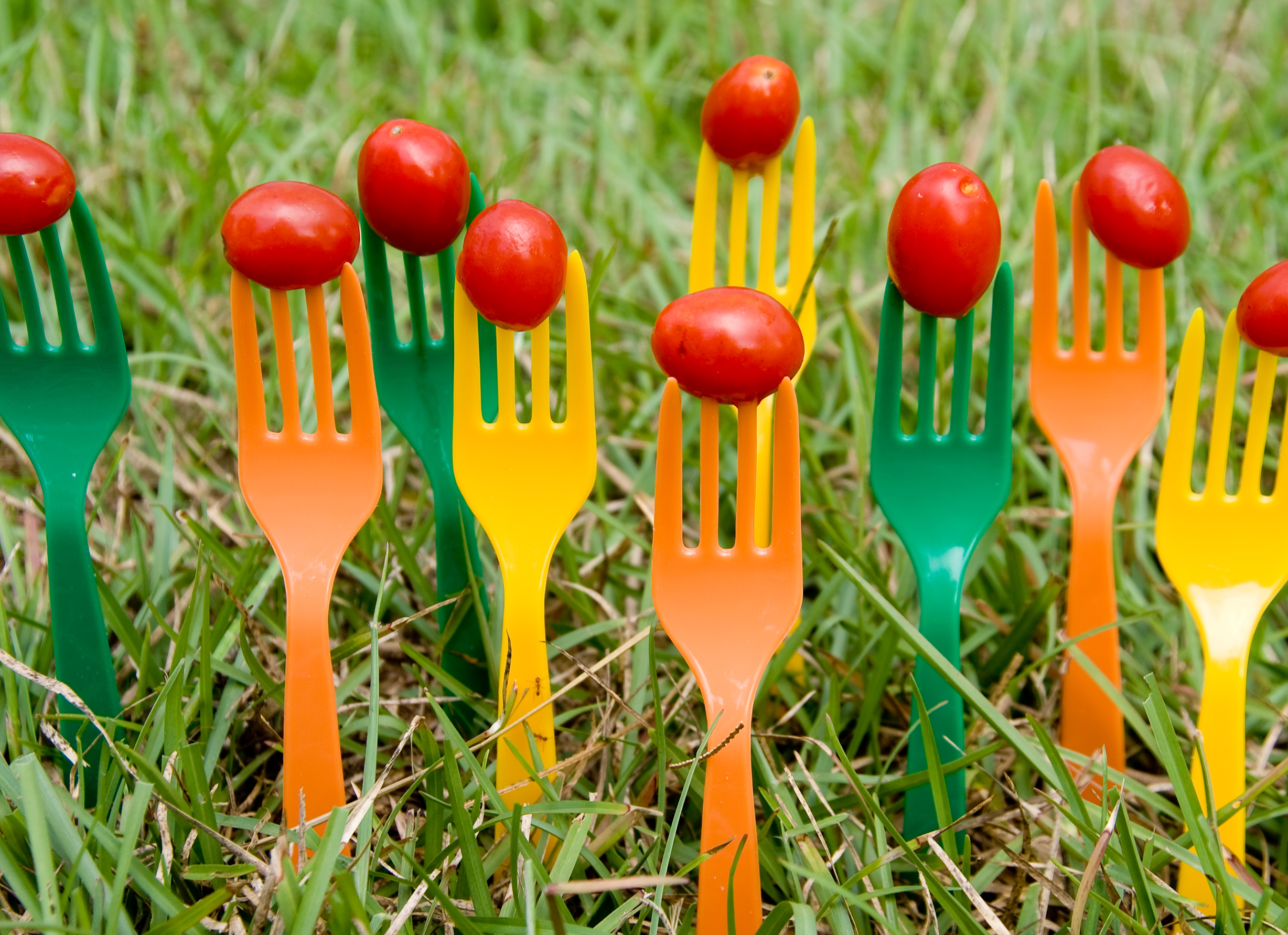Send your question to Umbra!
Q. Dear Umbra,
The Green Team at my church campaigned unsuccessfully for a policy of using — and washing — reusable dinnerware at church functions. Then we campaigned successfully for a policy of using all compostable dinnerware (plates, cups, and utensils) at church functions. The compostables are added to the bin that Cedar Grove Compost collects regularly. The compostable dinnerware costs a whole lot more than regular plastic-coated paper plates, plastic forks, and cups. Is using compostable dinnerware just greenwashing our church dinners? Is it really a significant improvement? Maybe we could use the cheap stuff and spend the savings on a better dishwasher…
Carolyn C.
Edmonds, WA
A. Dearest Carolyn,
First, may I commend your church for supporting a capital-G Green Team? I like to imagine you and your compatriots as the eco-version of the Avengers, protecting your community from oil spills and the scourge of idling cars. Well done.
Yours is one of a few recent letters I’ve received on compostable dinnerware and entertaining — and with the party-filled holidays just around the corner, now is a good time to devise a plan of attack for the mountains of dirty dishes looming in our future. (And while we’re in planning mode, here’s a refresher on greening your Halloween shindigs.)
Let’s start with the first part of your question: Is compostable dinnerware better than plastic? This is more complicated than it first appears. Compostable — sometimes marketed as “biodegradable” — plastics have the advantage of not coming from petroleum, thereby reducing dependence on fossil fuels. Instead, they’re derived from natural materials, usually corn. And under the proper conditions — i.e., in a commercial, high-temperature composting facility, not your backyard bin — they will break down into a mix of biomass, water, and carbon dioxide. Plastic, on the other hand, will hang around your neighborhood landfill for approximately the next bajillion years.
So what’s the issue? As we’ve explored before here and here, bioplastic loses its biodegradability chops if it’s accidentally tossed in the trash by confused consumers. And if it’s mistakenly placed in the recycling bin, bioplastic can gum up the works down at the recycling plant by contaminating the rest of the regular plastic load. It sounds like you’re properly disposing of your compostables through your local waste management systems, Carolyn, but not every consumer is as informed as your Green Team. Then there’s the matter of many bioplastics coming from corn, which brings GMO crops and Big Ag into the mix. Are you cross-eyed yet?
If your only choice is disposable plastic (plastic cups and cutlery, plus plastic-coated paper plates) versus compostables, the edge belongs to your current bioplastic setup. But is it the best choice available? I think not. The second part of your question asks whether washing reusable dinnerware in an energy-efficient dishwasher would trump the throwaways altogether. After shaking my Magic 8 Ball of Research, my answer is: Signs Point to Yes.
There are two major issues here: the resources that went into manufacturing each type of dinnerware and the water-use impact of washing the reusables (rather than handing the bioplastics off to your local composting facility). Perhaps surprisingly, disposable items beat reusable ones in terms of energy used to create them — but only if you use each one just once. Over the life cycle of your average ceramic plate, you’ll pay back that environmental debt, and then some. One analysis estimates it only takes 10 uses for a reusable mug to beat a polystyrene one; another found you’d have to use a porcelain plate 150 times before it overcomes its carbon deficit against paper plates. Still, your Green Team will reach that in less than two years, assuming two church functions per week.
The science becomes quite complex when we start splitting hairs between how many gallons of water (not to mention carbon) are used on a per-plate basis. In fact, let’s simplify things. Yes, there are energy and water costs associated with cleaning all those plates. But if you use that reusable dinnerware over and over again, there will be a day when you come out ahead.
My vote is on relaunching your Reusable Dinnerware Campaign. But instead of buying a new set of every plate, glass, and spoon, why not go for used items? Resale shops and garage sales are gold mines for this kind of thing; plus, the mismatched, vintage look is so chic right now. Even easier: Just ask every member of the Green Team to donate a few items from his or her kitchen cabinets. I’ll bet most of you can spare a mug or two.
Oh, and when it’s time to wash those fashionable dishes, I do recommend that efficient dishwasher. Energy Star models use 5.8 gallons of water or less per load, which is a big improvement over older ones. Further reduce water use by skipping the unnecessary prerinse. And don’t even think about trying to handwash all of those plates, OK? It’ll cost you, to the tune of 5,000 gallons of water per year and $431 in energy and water use, not to mention a nasty set of dishwater hands.
Best of luck in your campaign. If you run into dissent with your crew, you can tell them I sent you.
Sudsily,
Umbra





